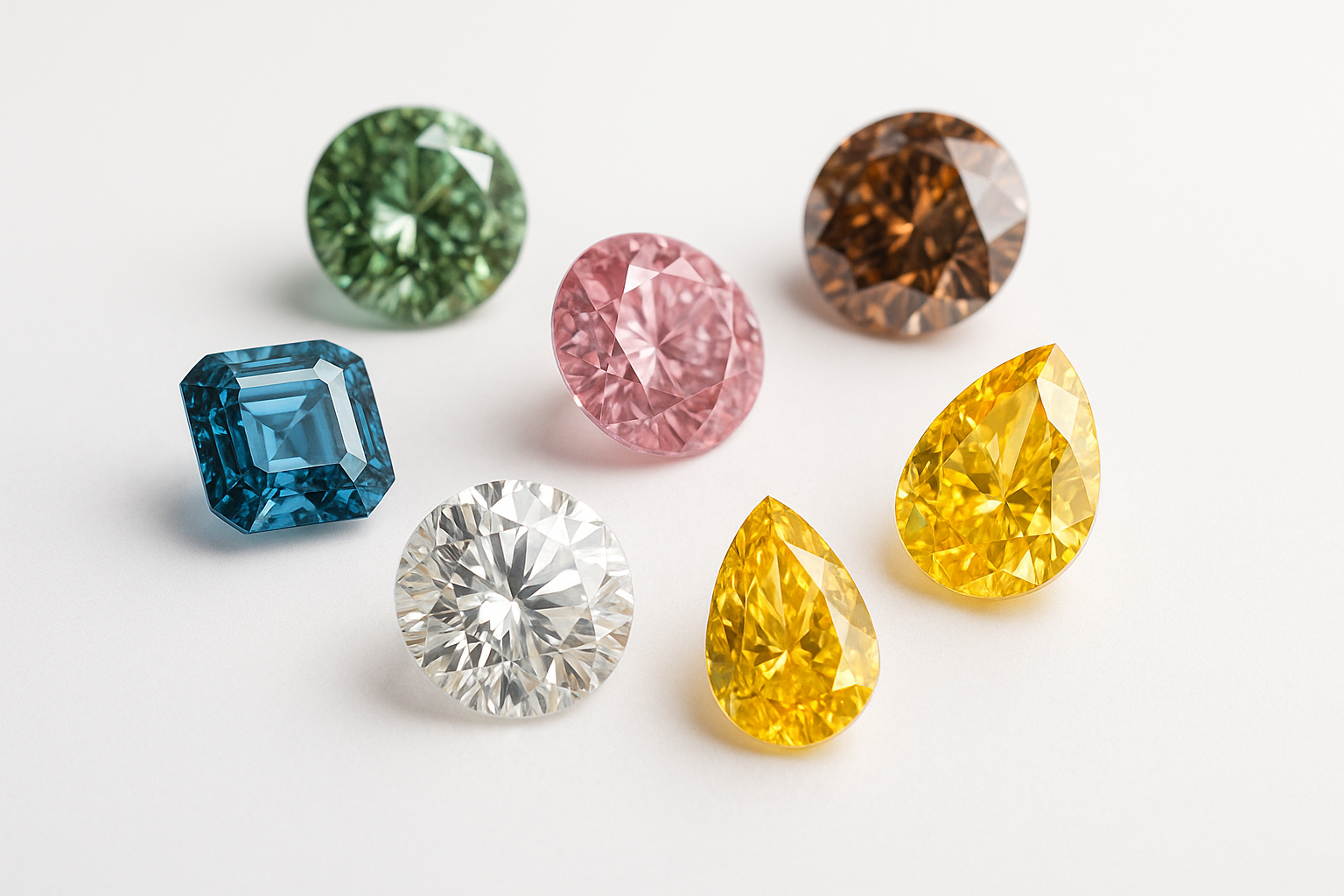Your Cart is Empty
Site under development -30% on the General Public Collection / CODE: "ICEVVS " - LIMITED STOCK
Site under development -30% on the General Public Collection / CODE: "ICEVVS " - LIMITED STOCK

The second most important factor when buying a diamond, right after brilliance, is color. Although virtually impossible to determine with the naked eye, color is a significant factor in a diamond's value. The purer the color, the higher its price. So, how can you be sure you're buying a high-quality gemstone?
Discover the color scale of diamonds and how color can be enhanced through subtle jewelry design techniques.
The Gemological Institute of America (GIA) has developed a color scale for diamonds to help the average person better understand the true value of their purchase. This scale assigns gemstones a grade from D to Z. Gemologists determine the grade by examining a loose diamond under controlled lighting and using a 10X loupe. The stone is then compared to a reference series with precise color values.
On this scale, D is considered perfectly colorless. D stones are pure, without any color, and their evaluation is the highest . Grade Z is assigned to diamonds that have a more pronounced yellow or brown tint.
Stones graded K or lower have a noticeable warm color. They tend toward yellow or brown hues and are considered low quality. Most reputable jewelers do not use diamonds of this type.
Stones in these categories have a slightly warm yellow hue that is only visible when compared directly to a higher-quality diamond. They are considered medium to good quality diamonds.
Stones graded E and F by a gemologist are very white. These high-quality diamonds are rarer and are considered to be of excellent quality.
Stones that receive a D grade are the rarest. They have the highest color grade and are therefore considered extremely valuable.
When it comes to diamonds, rarity is synonymous with value. For normal colored diamonds, value is based on the absence of color, as colorless diamonds are the rarest. For fancy colored diamonds, those outside the normal range, the rarest and most valuable colors are saturated pinks, blues, and greens. In any case, even very slight differences in color can have a significant impact on value.
Compared to fancy yellows and browns, diamonds with a noticeable hint of another hue are much rarer. Even in light tones and with low saturation, as long as they exhibit color in the face-up position, they are considered fancy colors. Red, green, and blue diamonds of medium to dark hue and moderate saturation are extremely rare.
Grading fancy color diamonds is complex and specialized, and it requires highly trained laboratory graders to carry out the process accurately.
The GIA system for grading fancy colored diamonds is designed to account for the fact that not all colored diamonds have the same depth of color. For example, yellow diamonds have a wide range of saturations, while blue diamonds do not.

There are also fancy white diamonds. They have a milky white color. Sometimes, white diamonds are cut to display beautiful opalescent flashes of color.
In the case of fancy-colored diamonds, color is the dominant value factor. Even diamonds with numerous inclusions that result in a low clarity grade are valued by connoisseurs if they exhibit attractive color. Of course, inclusions that threaten the stone's durability can significantly reduce the value of a fancy-colored diamond. Fancy-colored diamonds may have a colored grain, which is considered an inclusion.
Several factors influence the intensity of your diamond's color; this is where jewelry design becomes very important to enhance the appearance of your stone. Purchasing fine diamonds is an investment, so you should be sure to understand how the stone's color affects the jewelry's value.
A diamond's color becomes more apparent as the stone increases in carat weight. Therefore, it is best for larger diamonds to be relatively colorless. We recommend that diamonds over one carat have a color grade of H or higher.
A diamond's color is more visible, even to the untrained eye, when it's set in a ring or other jewelry piece with a contrasting hue. Our jewelry experts recommend setting stones graded G or lower in a yellow gold setting. Pairing them with a metal of a similar hue neutralizes the diamonds' warm color.
For the best visual impact, stones graded E or higher are ideally set in white gold or platinum. Yellow gold is not recommended with these nearly colorless stones. The warm color can reflect off the diamond, making it appear less valuable.
Experienced jewelry designers know that the cut of the stone can enhance a diamond's appearance. If the stone has a warmer color, a round or princess cut can help make the hue less noticeable because the facets reflect more light. On the other hand, emerald or marquise shapes are ideal for highlighting colorless diamonds.
When purchasing diamond jewelry, most buyers are looking for the sweet spot between price and quality. To get the best value, we recommend choosing diamonds in color categories J to G. These diamonds aren't so rare or difficult to find. These diamonds aren't so rare or perfect that they're extremely expensive, but they're still considered good quality stones. You and your friends won't be able to see the diamond's warm hues, and smart jewelry design will ensure the best visual result.
Ask the experts at Janvier Jewelers how to choose the best quality diamond for your budget. We are happy to guide our clients in choosing fine jewelry of all kinds.
Visit the Janvier Jewelers store in Newark, Delaware to view our wide selection of engagement rings and diamond jewelry, or call (302) 565-4861.